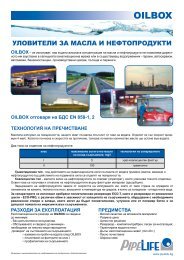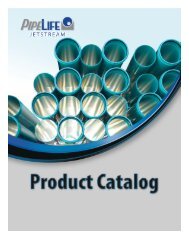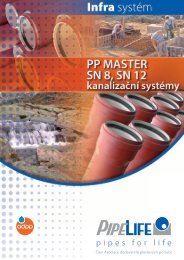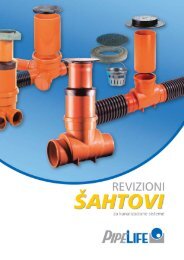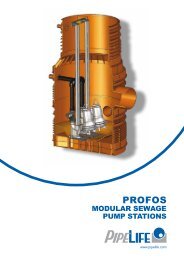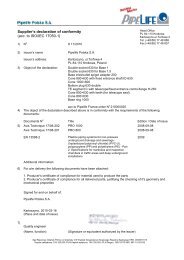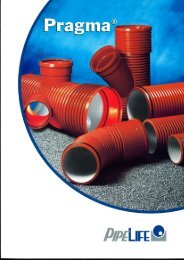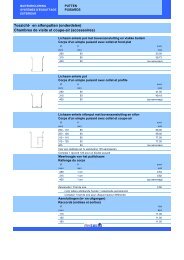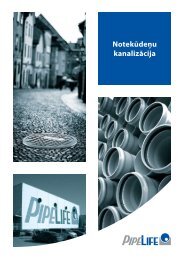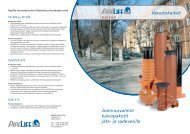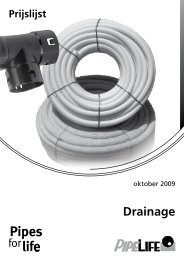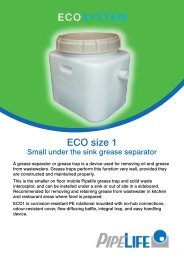PE Pipe Technical Catalogue (PDF) - Pipelife Norge AS
PE Pipe Technical Catalogue (PDF) - Pipelife Norge AS
PE Pipe Technical Catalogue (PDF) - Pipelife Norge AS
You also want an ePaper? Increase the reach of your titles
YUMPU automatically turns print PDFs into web optimized ePapers that Google loves.
<strong>Pipe</strong>life <strong>Norge</strong> <strong>AS</strong><strong>PE</strong> CATALOGUE-SUBMARINE APPLICATIONS, PI<strong>PE</strong>LIFE NORGE <strong>AS</strong>, December 2002.0.0 IntroductionDescription of different types of submarine applications for polyethylene pipes.Submarine <strong>PE</strong>-pipes have been used for transport of drinking water and sewage water since 1960.The pipes were then produced in length of 12 m, welded together by butt fusion, weighted byconcrete loads and sunk to the sea bottom by entering water at one end and releasing air at theother.The method is nearly the same today. However there is more emphasis on design and calculationsto secure a safe installation and avoid damages.Another innovation is use of long length (up to 500 m) pipes continuously extruded at the factory,towed by boat to the site and jointed by flange connections.This solution has been used successfully in overseas projects.Since 1960 there has also been a significant improvement in the development of raw materials andmethods of production.Therefore <strong>PE</strong>-pipes are today the most common pipe material in submarine applications.The combination of flexibility and strength makes it superior to other materials.In Norway, for instance, more than 95% of submarine pipelines are <strong>PE</strong>-pipes. The diameters varywithin the range Ø 50 mm - Ø 1600 mm, and the water depth can in special cases reach 250 m.Damages happen very rarely.This is due to :− Excellent materials− Proper design− Experienced contractors− Well educated supervisorsThe consecutive technical catalogue deals with the design subject.Here you will find theory and formulas that will enable you to calculate and solve the most commonproblems occurring in submarine pipeline projects.However, as an introduction, we first will mention the different types of submarine installations andbriefly describe a typical project example regarding the sinking of a pipeline.0.1 Different types of submarine pipelinesIf we follow the natural transport direction for consumer water, we can divide the installation into3 categories :− Intake pipeline− Transit pipeline− Outfall pipeline0.1.1 Intake pipelineIntake pipelines serve both civil and industrial applications.The sources can be rivers, lakes and fiords. The intake depths vary from 2 m to 250 m.The water is normally transported in the pipeline by gravity to an intake chamber.In some cases, the intake pipeline is connected directly to the pump in a pumping station.An intake pipeline is always exposed to negative pressure.Side 4 av 84



